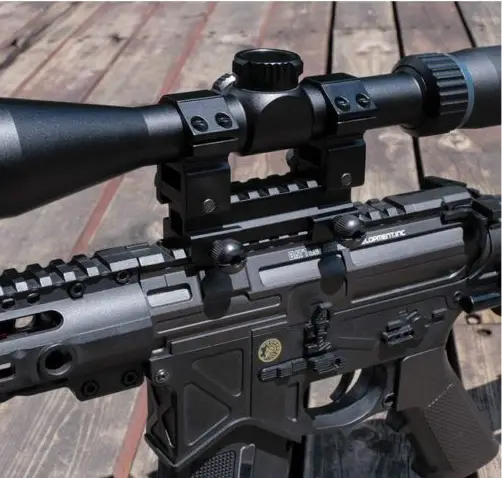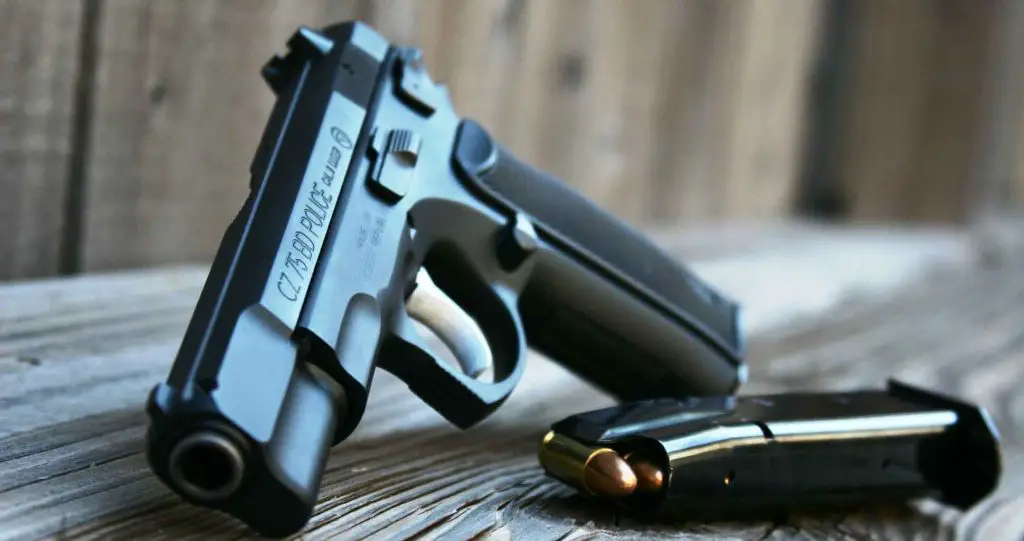
The Beginner’s Guide to Handgun
Everyone remembers their first firearm fondly, but if you’re in the process of trying to figure out what your first will be, have no fear.
There’s a lot to learn about handguns before you can take the plunge of owning one, but it doesn’t have to be overwhelming.
What is the best handgun for a beginner?
Before you can jump into gun ownership, you need to get acquainted with things like safety, the law, firearm maintenance, and testing out guns at the range.
The most popular beginner handguns once all is said and done though are choices like the Sig Sauer P320, Ruger LCR 9, and Glock G19X Gen 5.
According to the Small Arms Survey, there are roughly 120.5 firearms for every 100 US residents, so gun ownership is nothing new in this country.
If you’ve never had a handgun before though and want to make sure you do it right, we’ve covered all of the basics that you’ll need to know.
What Are the Types of Handguns?
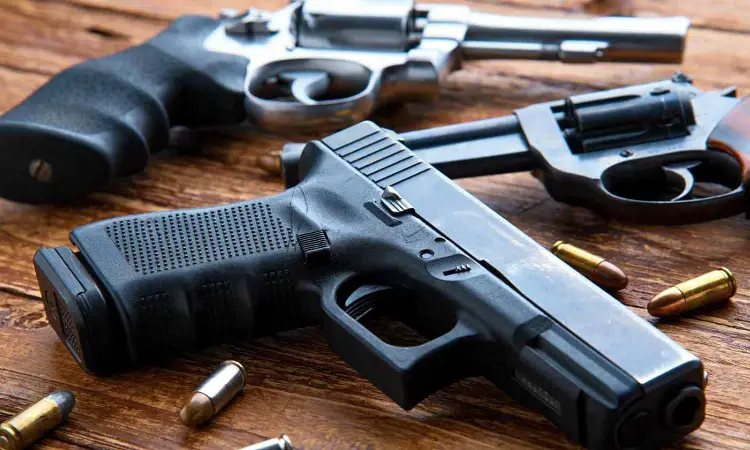
As with other types of firearms, a handgun is usually categorized by the type of action it uses, including single shot and repeating.
The action refers to the mechanisms within a gun that load and unload it, as well as firing and ejecting the cartridge, but other factors can classify a gun like its rate of fire and caliber.
A single shot handgun is a break action and it requires the user to load it each time it’s been fired.
A repeating handgun can hold more than one round and have extra cartridges loaded and ready to go.
The five main types of handguns that you’ll likely hear about are the single-shot pistol, semi-automatic pistol, automatic pistol, revolver, and multi-barreled pistol.
How Does a Handgun Work?

A semi-automatic pistol is one of the most popular types of handgun used in the US, so to get a better understanding of how they work, we’ve laid it out in steps.
This is what’s happening inside of a pistol when it’s firing:
- The cartridge is moved out of the magazine and fed into the barrel.
- The cartridge then moves into the barrel chamber.
- The slide of the gun and the barrel lock together.
- The primer on the cartridge is struck by the firing pin as you pull the trigger and the gunpowder inside of the cartridge is lit.
- The gas created from this fire causes pressure and expels the bullet from the cartridge and out of the gun’s barrel.
- The gun then unlocks as the slide and barrel separately again, and the slide moves towards the back of the gun to release the spent casing and eject the empty cartridge from the gun’s slide ejection port.
- The user cocks the gun which resets the action and puts the firing pin and trigger back together.
Gun Calibers and What They Mean
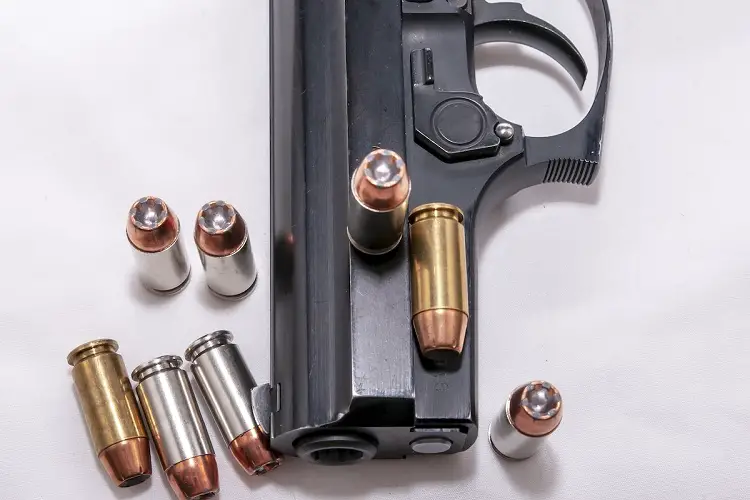
One of the most confusing parts of handguns and rifles is learning what each of their calibers is and what this number means.
In simple terms, the caliber of a handgun is a measurement of the bore and the size of the cartridges that have been made for each of those bores.
Every handgun is designed to use a specific cartridge and you can see what this is by finding the barrel stamp.
The measurement represents the diameter of the bore and is usually written as a hundredth of an inch, but can also be an inch or millimeter.
Sometimes, the caliber might be used to refer to the diameter of the bullet instead, and this is measured by the distance between the grooves on it.
Traditionally, calibers also featured another number in front of the measurement, and you might still see these throwbacks.
A .30-30 caliber cartridge means it took 30 grains of gunpowder and .30-06 means it was the year that this cartridge was designated as the official ammo that the US military used.
The Right Age for Gun Experience
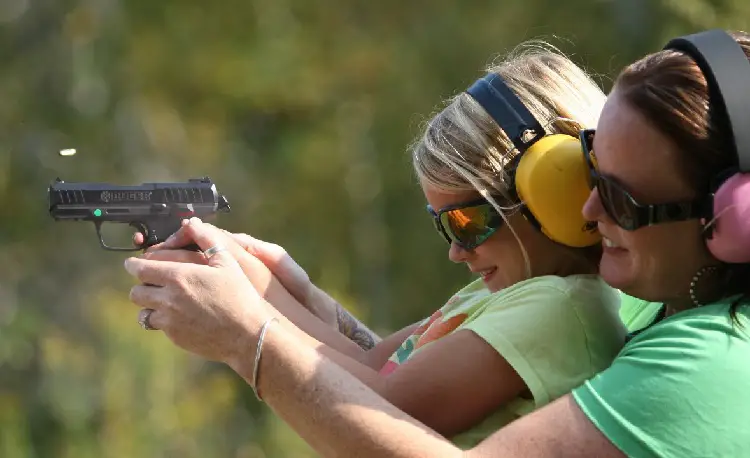
You’re never too old to learn how to fire a gun, but you can be too young.
One of the most important reasons for stringent gun safety and laws is to protect our children as dealing with these dangerous weapons can be fatal for them, but it’s up to each family to decide what’s best.
Experts have differing opinions on what the right age is to introduce a child to their first shooting experience, but the general consensus is between seven and 10 years of age.
This of course depends on the individual child and whether this exposure is even necessary, as it might not be for all kids.
Before attempting to introduce a handgun to your child to build their experience, there is a lot of preparation.
A child needs to practice holding a firearm first, they should be in a safe space where professional gun training takes place, and at no times should they ever be left alone with a gun or know how to access one.
Importance of Gun Safety
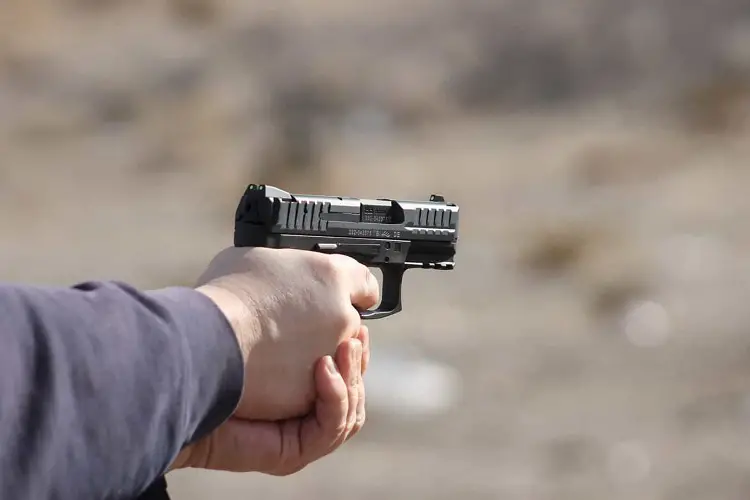
The subject of gun safety is a big one in this country and no matter what side of the fence you sit on, everyone can agree that it’s important to be a responsible gun owner.
There are some simple rules that gun owners of all skill levels should follow, and they’re a must-have to master when you’re a beginner.
- Treat every gun you come across as though it was fully loaded. This means you should never point the muzzle of a gun at anything you don’t intend to shoot.
- Keep ammunition out of the gun unless it’s being actively used. When storing a weapon, lock the ammo separately to the firearm as well.
- Don’t rely on the gun’s safety to protect the weapon from firing. Like any other mechanical device, the safety can malfunction from time to time.
- Use the right ammunition for the handgun you’re using and follow the strict instructions that came from the manufacturer. Attempting to fire incorrect ammunition will not only damage your gun but can seriously harm or kill you or someone around you.
- Have a regular cleaning and maintenance schedule for your firearm and take this time to inspect it for any damage or faults.
- Never let your gun leave your hands or your immediate view unless you plan on storing it away immediately.
- Every gun is different and the onus is on you to research and understand each firearm that you own.
Getting Your First Gun
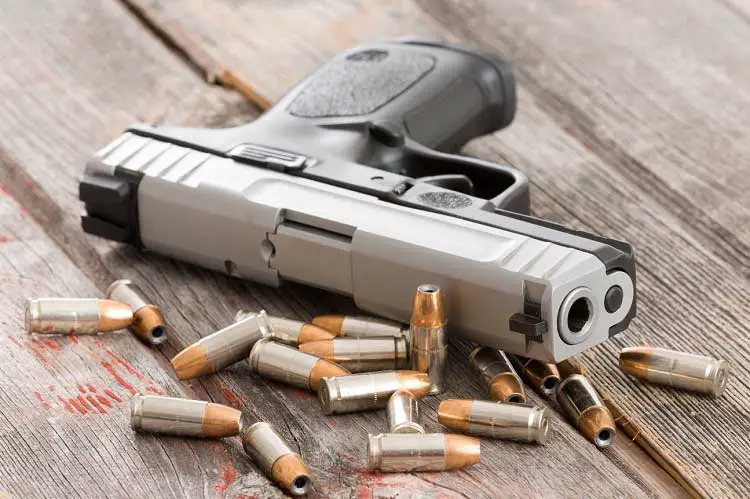
Before you can decide on a first gun, you need to think about what purpose it will serve in your life.
People possess guns for all kinds of reasons from personal protection to military combat, and your gun should reflect whatever it’s being used for.
The US has various laws regarding the possession and use of firearms, and it’s up to you to know what’s relevant in your state and area.
Take some time to research first as your location may ultimately determine what type of gnu you can get and if there are any other requirements, like a permit or registration, to possess one.
The best place to choose a handgun is in a dedicated gun store where they can show you the best options and discuss ammunition.
After you’ve chosen a gun, you may be subjected to things like a background check and registration process, depending on where you live, and there can be different waiting periods for when you’re able to take it home.
Learning How to Shoot
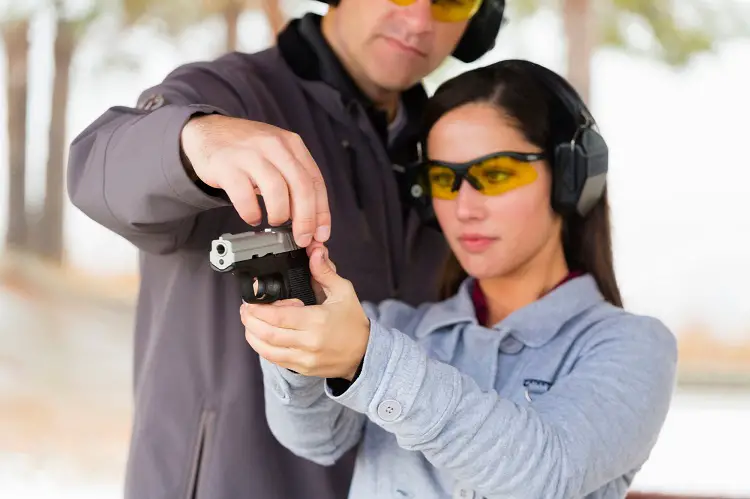
The thought of learning how to shoot a handgun can be daunting, and given the potentially dangerous nature of these weapons, it’s understandable.
If you’re thinking about getting a handgun for self-defense or another purpose, think about the best steps to take to make sure you learn the right way to fire it.
- Take yourself to a shooting range or gun store first and have a try of a few different guns. You might think that something will be suitable but after holding it, you realize it’s not. This is the best time to try out some different styles and see which you’re most comfortable with.
- Once you’ve acquired a firearm, you’ll want to learn the most effective way to use it. The best place to do this is with professional training which can come in the form of one-on-one or a group setting. There’s no shortage of classes out there including home defense, personal protection, and combat training.
- Think about the goals you have for your practice and what level you want to be at. This will determine how much training you need and what it will entail.
- During training, you’ll cover different things like the gun’s parts and mechanisms, safety, the law, and various types of target practice.
- After you’ve completed your initial training, you should make a point of returning every few months to keep the skills up. This will ensure you’re prepared if you ever have to use the firearm.
Maintenance and Cleaning of Handguns
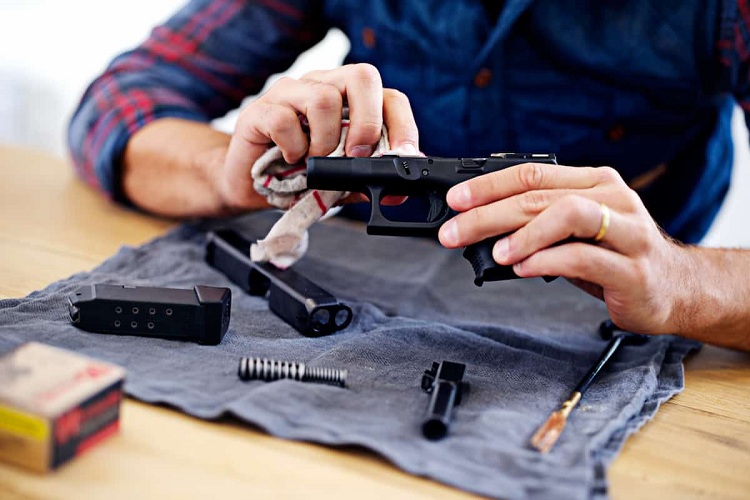
Just as important as practicing how to use your firearm is making sure it’s kept in good condition.
Even a handgun that’s stored away in a safe has to be cleaned and inspected from time to time, giving you peace of mind that it’s ready for action whenever you need it.
When you bring your handgun home, start assembling a basic kit of cleaning supplies so you can be prepared for the job.
This includes, but is not limited to, things like cleaning pads, gun oil, utility brush, bore cleaner, and more.
The process of cleaning a firearm should be the same every time, and this will help you make it a ritual.
The gun should be emptied, cleaned inside and out, lubricated, and put back together as necessary.
During cleaning, you’ll want to inspect all of the relevant parts and make sure nothing is damaged or faulty.
A gun should be cleaned after every use, and even if it’s been stored away, you’ll want to do the job every few months.
With the right care and regular maintenance, a good quality handgun will last for decades and fire just as accurately as the day you brought it home.
A Gun For Every Purpose
The handgun is a versatile firearm and a smart choice for all kinds of users from absolute beginners to expert shooters.
Whether you want something for concealed carry or like to have peace of mind that your home is protected, a handgun is the smartest choice and the safest option.
Related Questions
There’s a lot to learn when you’re new to gun ownership, but doing it responsibly means you take your time to understand how to operate and possess one safely.
If you still have more questions about handguns and what they entail, check out these FAQs and answers to give you a push in the right direction.
Does a Handgun Have to Be Registered?
In the US, only some states require that a handgun be registered to an owner when it’s purchased, including New York, the District of Columbia, and Hawaii.
Other states may require certain firearms to be registered as assault weapons, and some states prohibit the use of firearm registries altogether.
What is the Most Gun Friendly State?
Alaska is commonly referred to as the most gun-friendly state in the US as it ranks highly for having the most relaxed laws surrounding firearm registration, background checks, and waiting periods.
Other states that could be considered top performers when it comes to gun friendliness include Arizona, Wyoming, Idaho, and Montana.
Resources:
![5 Best Pellet Guns Under $100 [2023] 11 bb rifle gun](https://www.armorholdings.com/wp-content/uploads/2022/11/bb-rifle-gun.jpg)
